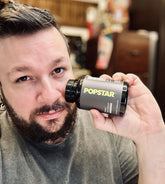The term “Thot” is a slang expression that has emerged in modern vernacular to describe or label an individual—often a woman—who is perceived to engage in promiscuous or attention-seeking behavior. While it originated as an informal, and frequently derogatory, colloquialism, its usage has expanded beyond social media hashtags to wider pop culture and everyday conversation. This guide explores the historical roots of “Thot,” its modern usage, potential psychological and social implications, and how it might intersect with men’s health and well-being. By understanding what this term signifies and the contexts in which it is used, we can better navigate conversations about sexuality, respect, and gender dynamics.
Table of Contents
- Definition
- Origin and Etymology
- Modern Cultural Usage
- Relevance to Men’s Health
- Psychological Impact and Social Perception
- Frequently Asked Questions
- Conclusion
Definition
“Thot” is a popular slang term, purported to stand for “That Hoe Over There.” Its connotation is widely understood as negative, implying a lack of sexual discretion. Although not recognized as a formal medical or scientific term, “Thot” holds sociolinguistic weight. It is derived from a subculture of internet and hip-hop contexts, spreading virally through social media platforms. Many people use it flippantly, unaware of its broader impact on mental health, social dynamics, or gender stereotypes.
In contemporary men’s health discourse, understanding the language used around sexuality and relationships can be crucial. While “Thot” might appear to be a simple slang word, language profoundly shapes perception, self-esteem, and relational boundaries. Consequently, this term’s casual usage can influence how men view themselves, their relationships, and women’s roles in society. Clarity on its definition and repercussions is key to fostering respectful communication and healthier interactions.
When used without care, words such as “Thot” can perpetuate harmful stereotypes. Addressing and analyzing these terms contributes to a more informed perspective for men, especially those navigating modern dating culture, identity, and social media trends. Additionally, understanding evolving slang terms allows professionals in men’s health, psychology, and related fields to communicate advice that resonates with younger generations.
Origin and Etymology
The exact etymology of “Thot” is debated. Many trace the origin of the term to hip-hop culture in the early 2010s, where it was used predominantly in rap lyrics and social media circles. Its meaning has remained fairly consistent: to describe someone—most often a woman—who is judged to be sexually promiscuous or attention-seeking. Because of its negative undertones, the word has quickly become recognized as an insult, specifically pointed at sexuality and perceived moral character.
Some theories suggest the acronym “Thot” existed earlier than its popular internet usage, possibly in local or regional slang contexts. As rap music and social media converged, these local slangs quickly gained national and then international awareness. Digital platforms such as Twitter, Vine, Instagram, and TikTok played major roles in mainstreaming the term. The internet’s capacity for viral trends enabled “Thot” to rapidly spread into broader youth culture.
Over time, numerous attempts have been made to reclaim or redefine the term. Some individuals, especially women who promote sexual empowerment, have tried to adopt the slang ironically. However, broader society still mainly perceives “Thot” as a pejorative expression, which can create conflict in contexts where differing cultural interpretations collide. In a men’s health framework, understanding how such terms impact social interactions and value judgments is pivotal for promoting inclusive and empathetic dialogue.
Modern Cultural Usage
In today’s digital landscape, “Thot” is used extensively within memes, captions, hashtags, and online comment sections. Often, the term appears as a lighthearted jab among friends, but in many instances, it can escalate into a serious label that perpetuates harmful stereotypes. In a realm dominated by quick digital communication, themes like body shaming, slut-shaming, and hypersexualization arise, and “Thot” is frequently connected to these issues.
Social media’s role in amplifying the term can be seen through viral challenges and popular content creators referencing “Thot” to attract views or spark controversy. For some men, it might become a normalized term, used jokingly or even unconsciously. However, normalizing a derogatory term can lead to subtle shifts in attitudes toward women. Disparaging or dehumanizing language like “Thot” contributes to a culture where individuals, especially women, are objectified or judged based on superficial markers of sexuality.
From the perspective of men seeking to maintain healthy relationships and mindsets, it is essential to recognize how language can shape respect and emotional understanding. Language influences unconscious beliefs and biases. Using terms such as “Thot” can inadvertently influence how one perceives consent, empathy, and personal boundaries in interpersonal relationships. Consequently, men’s health advocates, counselors, and educators are increasingly encouraging reflective communication: pausing to consider the implications of words before adopting them into everyday language.
While certain subgroups may use “Thot” more neutrally among peers who share similar cultural contexts and senses of humor, the broader cultural meaning remains predominantly negative. Understanding these nuances is central to men’s health goals, as men are often gatekeepers in male-dominant social environments. Combatting negative stereotypes requires deliberate communication choices, deeper awareness, and empathy, all of which foster healthier relationships and communities.
Relevance to Men’s Health
The usage of “Thot” intersects with men’s health considerations in several ways. First, words shape mindsets. For men, especially younger men, adopting language that demeans others can sustain mental frameworks rooted in aggression, toxic masculinity, and limited self-awareness. In men’s health, there is a growing focus on comprehensive well-being, including emotional intelligence, relationship management, and sexual health. Encouraging respectful language is an integral part of that holistic approach.
Second, addressing the term “Thot” directly ties into sexual health discussions. Men who frequently rely on derogatory language for sexual commentary may struggle to form understanding partnerships or healthy attitudes about sex and consent. Medical professionals, psychologists, and counselors increasingly highlight that building positive language around sexuality fosters better communication, reduces misunderstanding, and promotes safer sexual practices. Sexual health is not only about preventing illness or dysfunction; it encompasses fostering mutual respect and willingness to communicate about boundaries and desires.
Third, mental well-being is also at stake. Anger, resentment, and even shame can be underlying emotional states linked to the repeated negative labeling of sexual behavior. While “Thot” is often directed at others, the negativity inherent in the word can validate harmful norms that men might internalize over time. In turn, these norms can lead to isolation, difficulty communicating needs in relationships, or perpetuating harmful stereotypes that hinder personal growth.
Finally, men’s health extends into social health—how men connect with peers, friends, partners, and the larger community. A language-centric approach that normalizes respect can improve understanding and reduce relational tensions. By contrast, normalizing terms like “Thot” can compromise the very foundation of mutual respect men need for emotional support, whether in romantic relationships or friendships.
Psychological Impact and Social Perception
Language wields immense power to shape our perception of ourselves and those around us. The term “Thot,” in particular, can reinforce damaging stereotypes surrounding promiscuity, morality, and female sexuality. For men, partaking in this labeling process can reinforce a worldview in which complex human experiences are boiled down to simple, demeaning categories. Engaging in such labeling can perpetuate an us-versus-them mentality, potentially limiting men’s own understanding and breadth of empathy in various social contexts.
Moreover, frequent exposure to demeaning or dismissive terms can shape attitudes about relationships. If “Thot” is consistently used as an insult, men may develop a skewed sense of relationships as adversarial or transactional, especially within the realm of sexual or romantic encounters. This can hinder real intimacy, as vulnerability and openness often require a sense of trust and respect that is directly undermined by pejorative slang.
On the flip side, using or hearing derogatory labels can induce self-questioning or shame in individuals who may feel their behavior is being judged. Even though the term is typically directed at women, men’s mental health can be affected indirectly—from guilt at using harmful language or confusion about evolving standards of conduct. Recognizing that words can have deeper social and emotional connotations is a cornerstone of emotional intelligence. In modern men’s health discourse, emotional intelligence is celebrated as a skill that strengthens one’s ability to understand oneself, empathize with others, and foster healthy relationships.
Lastly, “Thot” can serve as a flashpoint for exploring broader cultural constructs like slut-shaming, body acceptance, and sexual freedom. Each time men engage in or observe usage of the word, it offers an opportunity to question whether the slang aligns with personal values of respect, empathy, and self-awareness. The journey to balanced, respectful views about sexuality—both one’s own and others’—can start with critical reflection on everyday speech.
Frequently Asked Questions
Is “Thot” recognized as a medical or psychological term?
No. “Thot” is purely slang and does not appear in medical or psychiatric diagnostic manuals. Its significance rests more in cultural and social usage than any formal medical classification. Nonetheless, understanding the implications of the term can be vital in discussions of mental health, personal identity, and interpersonal communication.
Can “Thot” usage lead to relationship issues?
Yes. People who casually or frequently use derogatory terms for others risk damaging trust, intimacy, and respect within relationships. Language is a powerful indicator of one’s approach to empathy and respect. Using “Thot” may signal a dismissive viewpoint of another person’s autonomy, which can create resentment or emotional distance.
Is “Thot” considered offensive or harmful for men?
While “Thot” is most often directed toward women, its usage can harm men as well. It fosters a culture of disrespect and perpetuates negative stereotypes regarding sexuality. If men repeatedly use or are exposed to such language, it can influence how they view their own relationships and emotional well-being, potentially fueling toxic behaviors or stifling healthy communication.
What’s the difference between “Thot” and “slut-shaming”?
“Thot” is a specific slang term, while “slut-shaming” is a broader phenomenon of shaming individuals (mainly women) for their perceived sexual behavior or attire. “Thot” essentially embodies a variation of slut-shaming by labeling someone as promiscuous and, thereby, implicitly judging them. However, slut-shaming can encompass a wide array of attitudes, behaviors, and linguistic choices beyond the use of just one term.
How can men promote healthy conversations around sexuality?
Men can begin by reflecting on the language they use and proactively shedding derogatory or demeaning words. Adopting respectful terminology and discussing sexuality with openness, empathy, and understanding allows for healthier conversations. Additionally, listening carefully to partners and approaching sexual topics with curiosity rather than judgment supports mutual respect in relationships.
Does “Thot” usage reflect toxic masculinity?
In many cases, it can. Toxic masculinity involves reinforcing harmful norms, such as belittling femininity, mocking vulnerability, or trivializing sexual agency. Using dismissive or insulting language related to someone’s sexual behavior can contribute to these forms of toxicity. However, awareness and responsible communication can shift cultural norms and diminish the harmful effects of such usage.
Is it possible to reclaim or reappropriate “Thot” positively?
Some individuals or communities attempt to reclaim the term as a symbol of sexual empowerment. However, mainstream usage remains predominantly negative. Reappropriation of any word typically requires significant cultural momentum and a shared intent to neutralize or invert its harmful original meaning. Whether “Thot” can be widely reclaimed is uncertain, but in many contexts, it still functions as a slur, meaning that men should exercise caution when using it.
Conclusion
Although “Thot” appears at first glance to be just another fleeting internet slang term, its profound social and psychological implications cannot be dismissed. For men—occupying a central role in shaping peer groups, digital communities, and intimate relationships—recognizing the true impact of such language is imperative. By reflecting on how words like “Thot” might perpetuate stereotypes, shape sexual norms, or distort our sense of empathy and respect, men can take tangible steps toward healthier, more inclusive communication.
In men’s health, the discussion surrounding “Thot” reminds us that wellness extends beyond the physical body. Emotional well-being, respectful relationships, and conscientious language all converge to create an environment in which men can thrive. Evaluating one’s verbal habits, untangling underlying assumptions about sexuality, and engaging in meaningful dialogue with peers and partners are crucial elements of growth. As the digital age continues to shape how we speak and interact, awareness and responsibility will remain key tools for promoting both personal and communal well-being. Ultimately, understanding the deeper meaning behind slang terms encourages a culture of respect—one that aligns with the overarching goals of men’s health: balanced minds, healthy relationships, and thriving communities.




















































